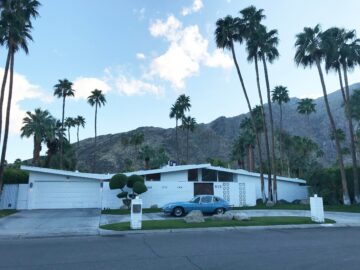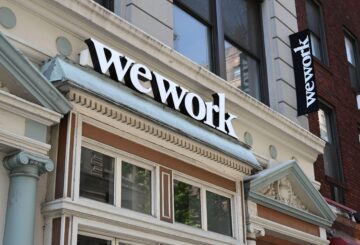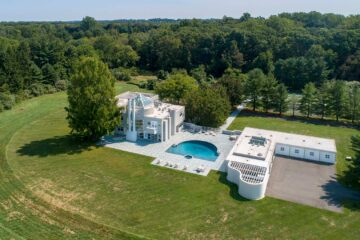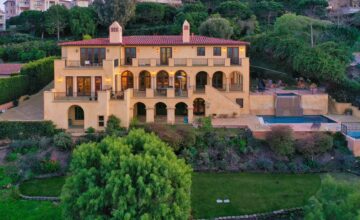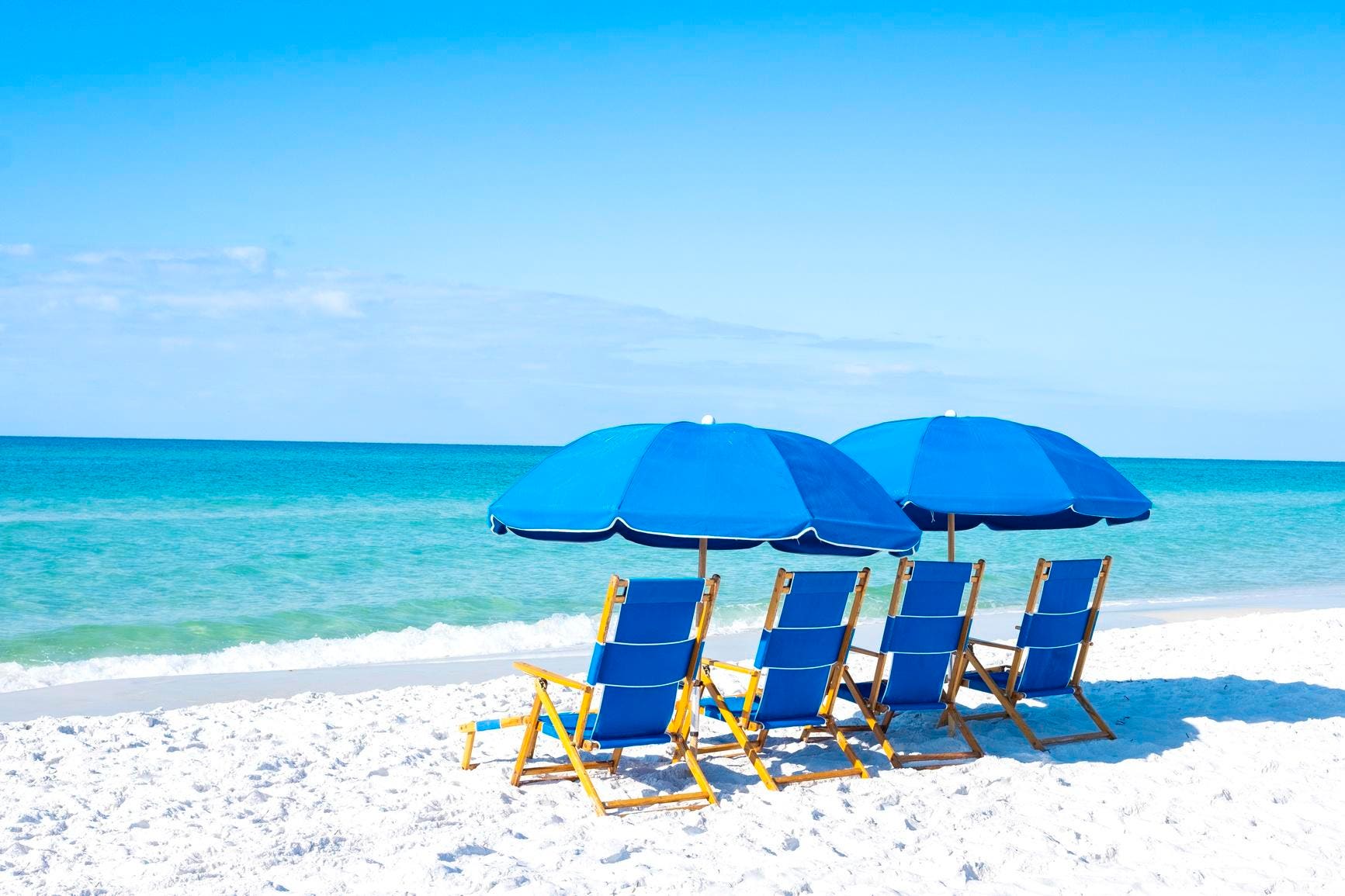
The white, sandy beaches that decorate the coast of Florida are certainly no secret. In Miami Beach alone—with a full-time population of about 80,000—just under 11 million visitors stay overnight in the small beach town every year. A similar story can be seen across many coastal towns across the Sunshine State.
However, with an incredible 1,350 miles of shoreline, some of Florida’s beach towns fly under the radar. In the case of the collection of small, coastal communities that make up the 24-mile stretch known as 30A, it is this anonymity that created the area’s relaxed and private reputation.
Stretching across 24 miles along the coast, 30A sits between Panama City to the east and Dustin to … [+]
Forbes Global Properties
Tucked away on the western side of the Florida Panhandle, 30A—named after the two-lane country highway that runs along the coast—is positioned between popular destinations Panama City and Destin.
Laid along the “Emerald Coast,” the shoreline region is home to a long span of rustic, soft sand beaches that touch against the cerulean waters of the Gulf of Mexico, rivaling even the best of the Caribbean Islands. Dotted along these shores are distinct, picturesque beach towns, each with a character and appeal of its own.
Though each town differs in aesthetic, many offer community amenities like clubhouses and events.
Coastal Abode
It’s no surprise then that this secret treasure is not so secret anymore—the area has seen a significant influx in visitors as of late, says James Watts and Brad Hilderbrand, co-founders of luxury brokerage Coastal Abode.
“At some point in the last 10 years, we’ve been the sixth-fastest growing county in the country in terms of population. It used to be a very seasonal area, but there’s been a shift toward more full-time residents, and now there’s year-round activity. ”
As the area continues to grow in popularity, waterfront real estate prices have surged.
Dave Warren Real Estate Photography
Despite the newfound popularity and the subsequent increase in commercial and residential development, Watts says that 30A has yet to lose its laid-back vibe.
“It still feels friendly; it still feels inviting. What people say around here is that it’s flip-flop luxury.”
This completely remodeled home, priced at $7.125 million, features expansive views of Gulf of … [+]
Coastal Abode
Homes in 30A
Save for what could be described as a “beach feel,” an overarching architectural trend for the area is hard to pin down as many of 30A’s communities feature unique and differing aesthetics and styles.
For example, Watts described the town of Rosemary Beach as having an “almost a European village feel with cobblestone streets and a town center” while the next town over, Alys Beach, is a blend of “the Mediterranean and Bermuda, with its emphasis on white, bright beach homes.” Further west, another beach community, WaterColor, is known as an “upscale community made up of beach cottages.”
This rendering for 161 Rolling Dunes in Blue Mountain Beach showcases the high-end finishes of many … [+]
Coastal Abode
This variation allows a wider range of buyers to find something that suits their preferences, added Watts. “It’s not all uniform; it’s a little bit of everything. Whatever your taste is, you can likely find it.”
While styling may differ, many homes throughout 30A boast similar amenities, including golf cart garages, ocean views and access to community facilities, such as swimming pools, fitness centers and spas.
Capitalizing on the area’s breezy coastal weather, homes often feature outdoor living spaces.
Coastal Abode
Property Prices in 30A
According to the August market update provided by Coastal Abode, the average sale price for the West End of 30A was $1.7 million and for the East End was $3 million. On the high end of those averages was a $10.9 million sale while the lowest-priced sale landed at $484,000.
Such a range in pricing reflects the diversity of the 30A market, where properties whose values differ by many millions of dollars can often be within a few blocks of each other, says Watts.
In addition to a variety of designs and styles, real estate in 30A is available at a wide range of … [+]
Dave Warren Real Estate Photography
“30A is a hodgepodge—you can have a $15 million, golf-front home and then down the street a 1950s classic cottage for around a million.”
The most expensive homes in the area consist primarily of those located directly off the beach, listing for upward of $20 million. In particular, newer construction beachfront homes—often larger than older homes and decked out with modern amenities—come with the most premium price tags.
The stretch of 30A’s coast is famous for turquoise waters and white sand, exemplified in this … [+]
getty
The Vibe of 30A
Despite being famous for its pristine beaches, Watts says that 30A has much more to offer than surf and sand.
“There’s not this 100 percent focus on the beach. There are exceptional hiking and biking trails, golf courses and incredible restaurants and events.”
In recent years, the area has adapted to the arrival of more full-time residents with an increase in commercial offerings. “The longer people stay here, the more they want those things that they’re used to back home—they want restaurants, they want shopping options, they want events. So that’s been driving an increase in these local amenities.”
With the recent increase in new residents, restaurants and shopping options have been on the rise.
getty
Many of the towns in 30A were designed with walkability in mind. One town in particular, Seaside, is known as a model for New Urbanism—an urban planning movement that promoted eco-friendly habits by creating walkable neighborhoods. The small beach town’s reputation for “picturesque perfection” even drew the attention of Hollywood, with Seaside serving as the filming location for the 1998 film The Truman Show.
Grayton Beach, a small historic village, abuts the nearly 2000-acre Grayton Beach State Park.
getty
Surrounding 30A
Multiple airports are located within a short distance from the towns of 30A. To the east, the Northwest Florida Beaches International Airport in Panama City offers direct flights from all over the country, including major hubs like Atlanta, Denver and Dallas. Destin-Fort Walton Beach Airport sits about 40 minutes away from Miramar Beach.
Tallahassee is located more than 100 miles to the east or roughly a two-and-a-half-hour drive.
MORE FROM FORBES GLOBAL PROPERTIES
- SEO Powered Content & PR Distribution. Get Amplified Today.
- PlatoData.Network Vertical Generative Ai. Empower Yourself. Access Here.
- PlatoAiStream. Web3 Intelligence. Knowledge Amplified. Access Here.
- PlatoESG. Carbon, CleanTech, Energy, Environment, Solar, Waste Management. Access Here.
- PlatoHealth. Biotech and Clinical Trials Intelligence. Access Here.
- Source: https://www.forbes.com/sites/forbes-global-properties/2023/10/15/exploring-floridas-30a-a-stunning-stretch-of-coastal-towns-hiding-in-plain-sight/
- :has
- :is
- :not
- :where
- $3
- $UP
- 000
- 1
- 10
- 100
- 11
- 125
- 1998
- 2013
- 24
- 40
- 66
- 7
- 80
- 9
- a
- About
- access
- across
- activity
- adapted
- added
- addition
- After
- against
- airport
- Airports
- All
- allows
- along
- amenities
- an
- and
- Anonymity
- Another
- appeal
- architectural
- ARE
- AREA
- around
- arrival
- AS
- At
- Atlanta
- attention
- AUGUST
- available
- average
- away
- back
- BE
- Beach
- Beaches
- been
- being
- Bermuda
- BEST
- between
- Bit
- Blend
- Blocks
- Blue
- brad
- Bright
- brokerage
- but
- buyers
- by
- CAN
- Caribbean
- case
- Centers
- certainly
- character
- City
- classic
- co-founders
- Coast
- coastal
- collection
- commercial
- Communities
- community
- completely
- construction
- continues
- could
- country
- county
- courses
- created
- Creating
- Dallas
- Denver
- described
- designed
- designs
- destinations
- Development
- differ
- differing
- direct
- directly
- distance
- distinct
- Diversity
- dollars
- down
- drive
- driving
- each
- East
- Eco-friendly
- emphasis
- end
- estate
- Ether (ETH)
- European
- Even
- events
- Every
- everything
- example
- exceptional
- Expand
- expandable
- expansive
- expensive
- Exploring
- facilities
- famous
- Feature
- Features
- feel
- few
- Film
- filming
- Find
- fitness
- Flights
- florida
- Focus
- For
- Forbes
- friendly
- from
- further
- Global
- golf
- Grow
- Growing
- habits
- Hard
- Have
- having
- here
- High
- High-End
- Highway
- hiking
- historic
- Hollywood
- Home
- Homes
- HTTPS
- hubs
- in
- Including
- Increase
- incredible
- influx
- International
- inviting
- Islands
- IT
- ITS
- james
- jpg
- known
- larger
- Last
- Late
- like
- likely
- listing
- little
- living
- local
- located
- location
- Long
- longer
- lose
- Luxury
- made
- major
- make
- many
- map
- Market
- Market Update
- May..
- Mediterranean
- Mexico
- Miami
- million
- millions
- mind
- minutes
- model
- Modern
- more
- most
- Mountain
- movement
- much
- nearly
- New
- New Construction
- newer
- next
- no
- now
- ocean
- of
- off
- offer
- Offerings
- Offers
- often
- older
- on
- ONE
- Options
- or
- Other
- out
- Outdoor
- over
- overarching
- overnight
- own
- Panama
- Park
- particular
- People
- percent
- perfection
- Picturesque
- PIN
- Plain
- planning
- plato
- Plato Data Intelligence
- PlatoData
- plus
- Point
- Pools
- Popular
- popularity
- population
- position
- positioned
- preferences
- Premium
- presentation
- price
- Prices
- pricing
- primarily
- private
- projects
- Promoted
- properties
- provided
- radar
- range
- real
- real estate
- recent
- reflects
- region
- relative
- relaxed
- rendering
- reputation
- residential
- residents
- Restaurants
- Rise
- rising
- Rolling
- Rosemary
- roughly
- runs
- s
- sale
- SAND
- sandy
- say
- says
- scene
- seasonal
- Secret
- seen
- serving
- shift
- Shopping
- shops
- Short
- side
- Sight
- significant
- similar
- sits
- small
- So
- Soft
- some
- something
- spaces
- span
- State
- stay
- Still
- Story
- street
- Stunning
- subsequent
- such
- suits
- Sun
- sunshine
- surf
- Surged
- surprise
- swimming
- Swimming Pools
- taste
- terms
- than
- that
- The
- The Area
- The West
- their
- then
- There.
- These
- they
- things
- this
- those
- throughout
- to
- touch
- toward
- town
- towns
- Trend
- umbrella
- under
- unique
- Update
- upward
- urban
- used
- Values
- variety
- very
- Vibe
- views
- Village
- visitors
- want
- warren
- was
- Waters
- Weather
- were
- West
- Western
- What
- whatever
- while
- white
- whose
- wide
- Wide range
- wider
- with
- within
- year
- years
- yet
- you
- Your
- zephyrnet

